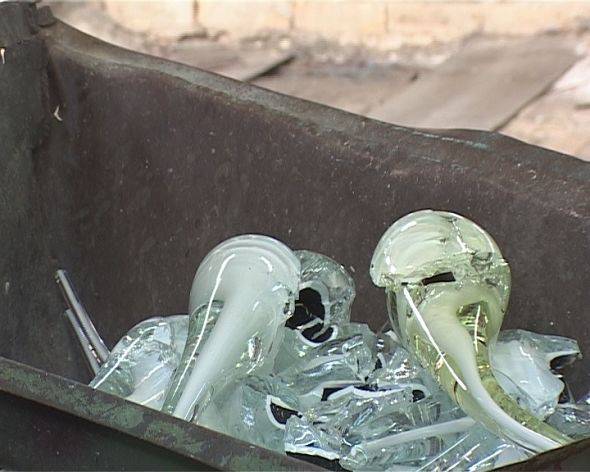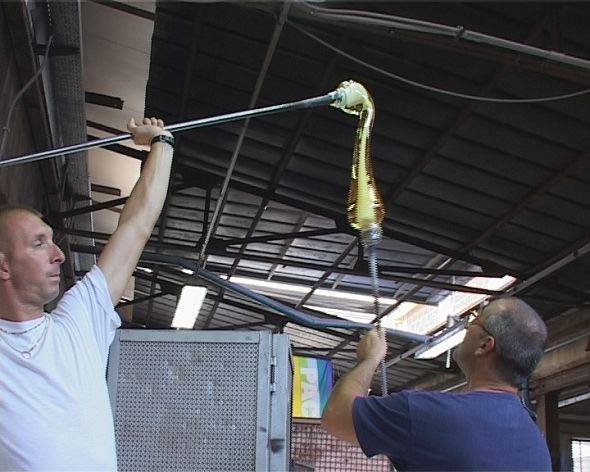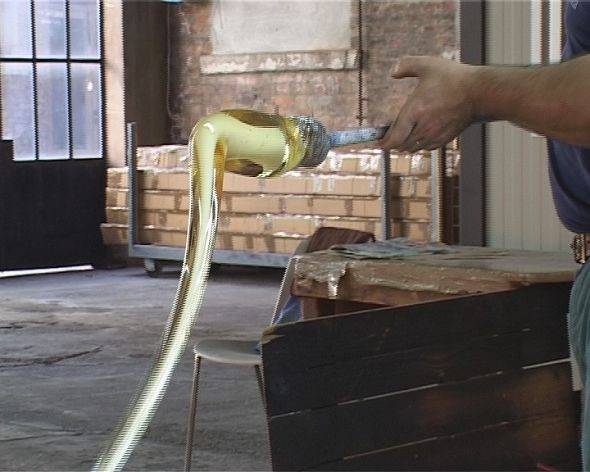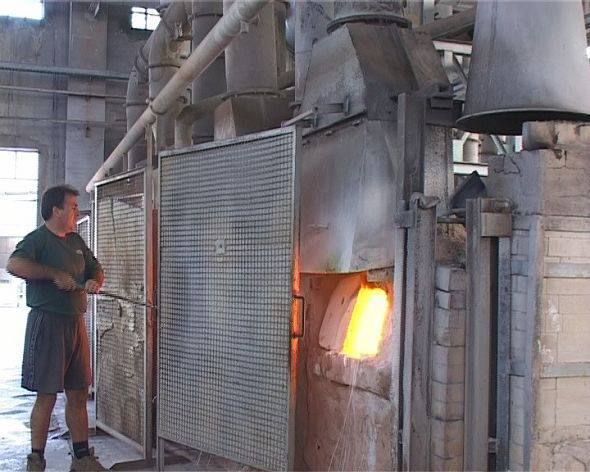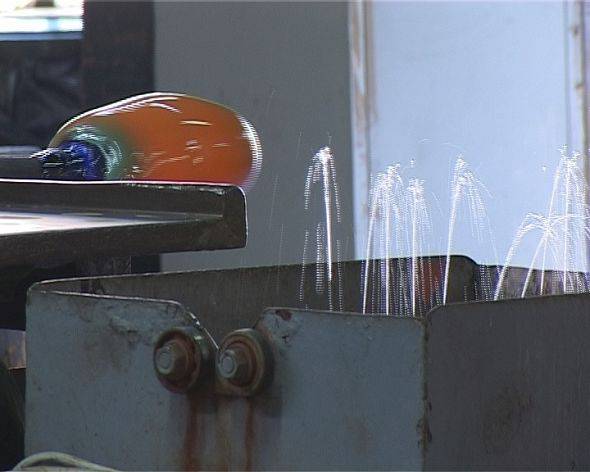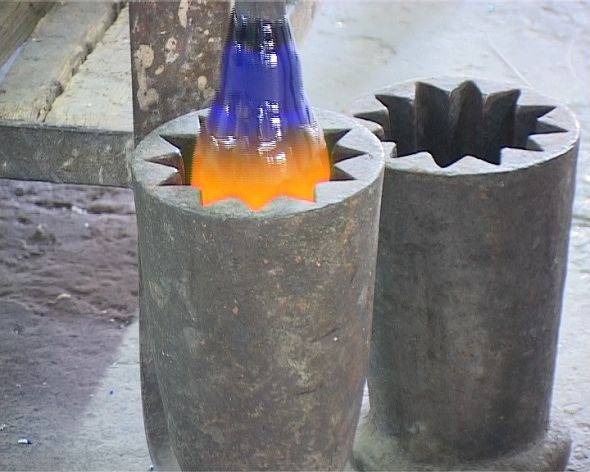Description
This procedure involves the taking of a certain quantity of glass (5-10 Kg) in its plastic state from the crucible a few times, with a blow pipe. After the first moulding, and the rolling of the glass gob in the 'mailloche' (a wooden mould in the shape of a hemispherical bowl), so as to uniformly distribute the glass around the end of the blow pipe which assumes the form of a sphere, stretched to a pear-shape.
During the execution of these operations, the glass must be kept sufficiently plastic by heating it several times in the furnace for short periods.
To achieve the required form before stretching, the glass gob is moulded both by rolling it on a smooth metal surface (marvering), and keeping the blow pipe vertical and allowing it to swing so that the glass takes on the form of a trunk of a very elongated cone.
At the same time, a small quantity of glass is taken out of the furnace with an unpierced blow pipe (lifting or prop rod) which is shaped on the plate, so that a short cone is formed at the end of the blow pipe. This gob, which is appropriately cooled, is attached to the bottom of the other one. The actual stretching of the tube can now take place. On one end, the person who has the pierced blow pipe stays still and continues blowing in the tube, while at the same time rolling the blow pipe; at the other end, the person with the prop rod moves away slowly from the other person, stretching the mass of glass in such a away so that it lengthens to form the required tube.
At the same time, a third person cools, with a fan, the tube during the elongation and controls it with callipers so as to obtain the required diameter and thickness. Cooling with a fan occurs in the area where the tube has already reached the required diameter.
At the end of stretching, when the glass is already stiff and there is no longer the possibility of it deforming under its own weight, it is placed on the ground on a series of wooden slats.
Then the ends of the tube near the two blow pipes are wet with a bit of water, it is then cut and separated from the tools used to produce it. With a piece of carborundum, it is then possible, once it is cold, to cut the long tube into pieces of the required length.
The perfection of the obtained tube (constant diameter and thickness, good roundness) depends above all on the ability of the worker who has to prepare the gob with the utmost accuracy to render it as homogenous as possible and then by the regularity with which the tube is stretched and blown along the passage which is several tens of metres in length (even 150 m when capillary holed tubes are produced). The rotation of the tube during the stretching phase is necessary to prevent it from bending.
The productive capacity of a team of workers can reach a maximum of 250 kg a day.
When you want to produce tubes with a very small hole compared to its diameter, the procedure is a little different. The glass gob is taken out from the furnace with an unpierced blow pipe and after having formed a full-glass cylinder, this is pierced length-wise with a metal punch or pincers (opening pincers). When the prop rod is attached to the gob, air remains in the hole which has been made, which, in the stretching phase, will keep the hole in the tube. This system was used to produce, for example, the 'glass bead blow pipe', that is, the tube which was transformed into glass beads for successive production operations and also the capillary holed tube for the production of thermometers.

